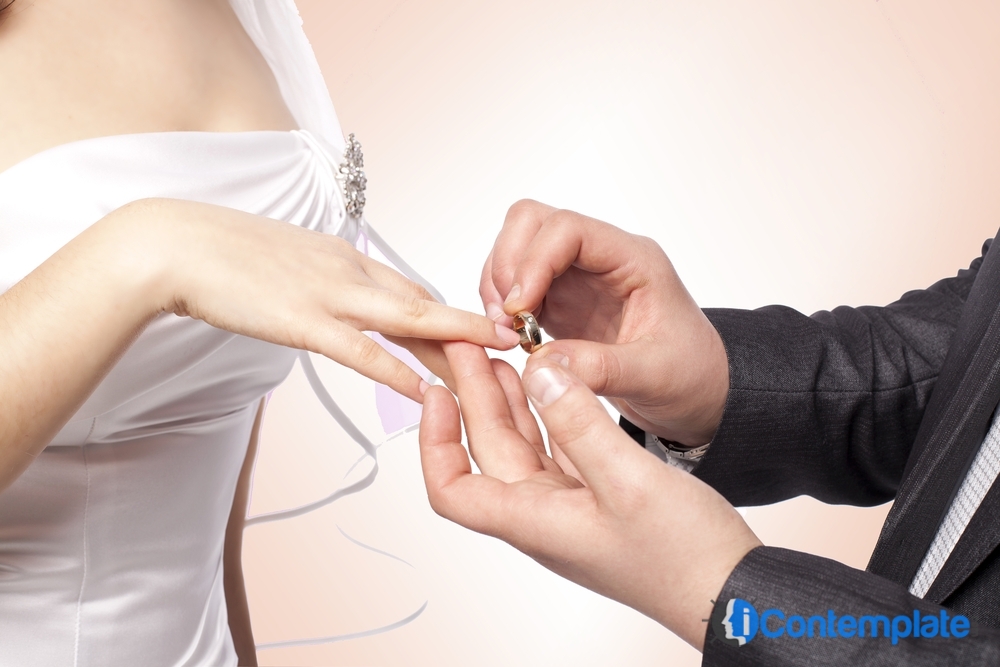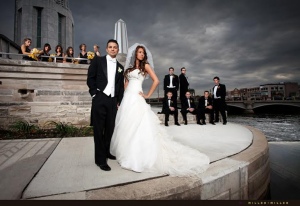Many people have no idea where the wedding traditions practiced in their community actually come from. So many heritages and traditions have been blended and morphed throughout the centuries of wedding ceremonies in the United States and the rest of the Western world. And yet some traditions have made their way to us all the way from antiquity. Getting to know their origins can be helpful in helping couples to choose the traditions most meaningful for them. This knowledge can also help anyone keep up with the banter at the wedding reception by dishing out interesting facts and stirring up thoughtful conversations.
Wedding Cakes

Believe it or not, nuptials have been celebrated with cakes since ancient times. While ancient Romans broke the cake over the bride’s head as a symbol of good fortune, modern weddings still tend to allow for her, and her bride groom, to get a bit dirty with the cake while feeding each other. Medieval British wedding parties encouraged the bride and groom to kiss over the highly stacked cake in order to symbolize a lifetime of prosperity. These early English cakes were filled with all kinds of meats, in stark contrast to our modern sweet-toothed traditions. Modern wedding cakes gradually developed out of seventeenth century fruit pastries meant to symbolize both fertility and prosperity baked in fired hearths.
Something Old…
…Something New, Something Borrowed, Something Blue, and a Sixpence in her Shoe” is often referred to as an Old English proverb, but more accurately came into common usage during the Victorian times. The traditions behind it are quite ancient, but the rhyme is relatively new. The something old is supposed to symbolize your ancestors’ blessings on your union. Something new is intended to encourage the new couple to avoid setting up a household with an old broom, which was commonly thought to bring incredibly bad luck. Something borrowed relates to the belief that something from a happily married woman will pass on the happiness to the new bride. Something blue symbolizes the bride’s purity and the sixpence, though often omitted from many modern weddings, is thought to come from ancient Greek customs and intended to carry the bride into her new home with prosperity.
Flowers
As medieval knights traditionally wore their Lady’s colors as declarations of their love, the groom is supposed to wear a flower in his lapel that calls to the colors in his bride’s bouquet.

Wearing a Veil
Still quite common in weddings in many regions and traditions, the bride’s veil is thought to have originated in ancient Rome as well. At this time, her veil was thought to protect her as she walked down the aisle from evil spirits cursing her with their jealousy.
Engagement and Wedding Rings
The tradition of exchanging rings began with ancient coins. A man would break a coin, giving half to his betrothed and keeping half for himself, with the intent to return at a later date to make them whole again in matrimony. In the middle ages, coins were replaced with rings, but they were still traditionally broken and split between the engaged pair. The fiancée kept hers tied around her neck as a visible message that she was betrothed. Over the years, the one broken ring evolved in two separate rings that could be worn more easily.
Diamonds weren’t always sported on these engagement rings, nor were diamonds as accessible as they are now via internet retailers like Amazon and Herkimer Diamond Quartz. Actually, they were only introduced as fiery symbols of love and nuptials by the Italians. They were then popularized across Europe in the fifteenth century by French and Austrian royalty. While diamonds still hold on to that royal air, they have become a custom popular with the masses as well.









